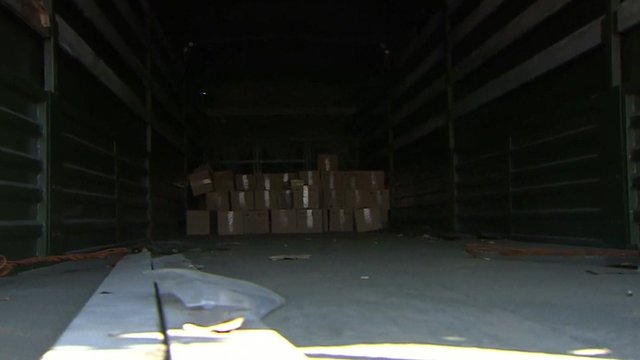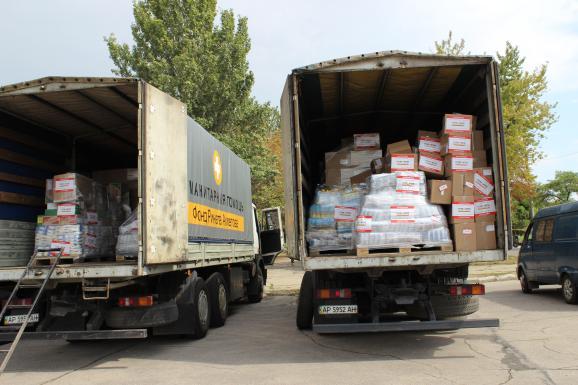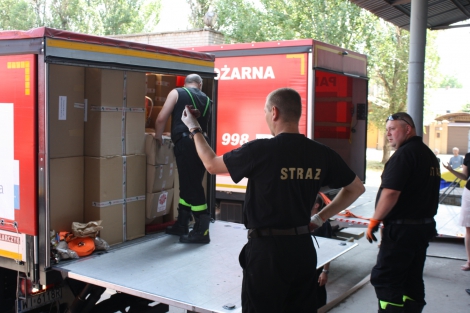1. None of the convoys have been properly inspected by Ukrainian border control
The initial convoys have sparked Ukrainian and international condemnation, officials asserting that cargo entering en masse without Ukrainian border control amounts to invasion. However, as the interest to the convoy campaign gradually subsided, this overt violation of Ukraine’s sovereignty is left unanswered, accepted as a new reality. Today, all of the Russian convoys enter Ukraine through the parts of the border which Ukraine has no control over; Ukrainian border guards at best can observe, but not inspect the cargo.
2. The food supplies often end up being sold, not distributed as aid
One might argue that relieving Donbas from the ravages of war is more important than any international formalities. This could be agreed, if the convoy’s bona fide humanitarian cargo really did find those in need. However, as Russian independent Novaya Gazeta wrote in November, most of the humanitarian aid never reaches ordinary citizens, instead ending up in local stores. News from the Luhansk “republic” suggest that humanitarian supplies are used as a means to control unruly local terrorist commanders. Disloyal Cossacks may see humanitarian cargo cut off altogether, which is just another means Luhansk “authorities” use to consolidate their power (others being outright murder of those unwilling to submit).
3. The convoys serve their role as positive PR for the internal Russian audience, but some are mostly empty
Despite that, the convoys do serve their PR role, with each of them covered by Russia’s state media. For Kremlin's propaganda machine, this is also another way to undermine Ukraine by accusing Ukrainian troops of planning provocations against the convoys that never came to fruition. Suspicions have arisen that the convoy spectacle indeed was just for show as the white trucks were found to be mostly empty. Russian emergency ministry authorities explained this away by technical requirements. However, trucks carrying humanitarian aid from other donors (such as the Ukrainian oligarch Rinat Akhmetov) were full almost to the brim, raising questions as to the veracity of those technical requirements. To date, the half-emptiness of the Russian trucks still remains a mystery. Later, Ukrainian security council spokesman accused the convoy of moving valuable equipment from Donbas factories to Russia.


4. The convoys could be used to distract from brewing military action
The very first convoy may have served yet another purpose, namely that of distraction. The trucks rolled in mid-August, as the battle of Ilovaisk was raging between Ukrainian forces and terrorists, for the first time massively aided by Russian regular troops. With the attention focused on the convoy, the conventional invasion probably had a better chance of staying covert. However, this tactic did backfire: while waiting for the convoy to cross the border, Western journalists spotted a column of unmarked military vehicles entering Ukraine. https://twitter.com/shaunwalker7/status/4999610484481269785. Some of the convoys were crewed by Russian military
Since then, the crew and cargo of the convoys has been called into question. Ukrainian open source investigators at Informnapalm found that the trucks were manned by Russian military drivers and apparently accompanied by elite paratroopers. Curiously enough, the “white trucks” appeared to be hastily painted over from army khaki, spots of the previous color still visible under the tarp.




